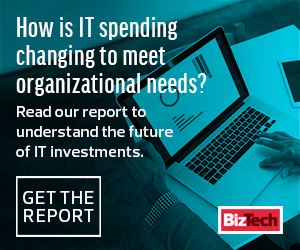Security Focus Shifts to the User
Security has long been a major IT priority for businesses as they look to protect both organizational information and customer data. Most attacks on this data come through employees; 62 percent of businesses fell victim to phishing and social engineering attacks in 2018, according to Cybint Solutions.
In response, the CDW and IDG research found that IT and business leaders at organizations with more than 250 employees say implementing end-user security policies (42 percent) and improving their understanding of external threats (39 percent) are among their top business goals when it comes to mitigating risk. Now that many employees are working from home — some on their own devices — it’s even more critical to make sure workers remain vigilant to potential attacks.
The growth of remote work over the last few years, even before this year’s massive shift, has also influenced security spending, according to the CDW and IDG survey. IT and business leaders at large organizations named network access controls (48 percent) and web gateways and web security (tied at 44 percent) as their top investment priorities over the next two years. Compliance also remains a factor, with 54 percent of respondents at large businesses citing industry regulations as a top driver of planned investments.
MORE FROM BIZTECH: The building tech that can help ensure social distancing.
Data Analytics and Collaboration Are Key for Increasing Productivity
Business leaders are always trying to get the most out of their employees, and they’re increasingly turning to technology to help. In fact, the CDW and IDG research found that improved productivity was the top driver of planned investments in workplace solutions for organizations of all sizes, with 54 percent of large businesses and 49 percent of small businesses (250 employees or fewer) in agreement.
The top ways that large businesses are trying to achieve this over the next two years are by making better use of data analytics (52 percent), investing in training and certifications for employees (45 percent) and increasing automation (45 percent).
While there are many tools and technologies at their disposal, IT executives at large organizations also say they are focusing on email (56 percent), collaboration (52 percent) and messaging tools (50 percent). IT leaders working at small businesses, on the other hand, say they are prioritizing analytics software (54 percent) above email (46 percent) and productivity software (41 percent) to improve workplace flexibility and engagement.
These priorities align with the realities of the new workplace, with staffers in different buildings, cities or even states. Increasing efficiency and emphasizing virtual teamwork are key elements to being successful in the future of work.











